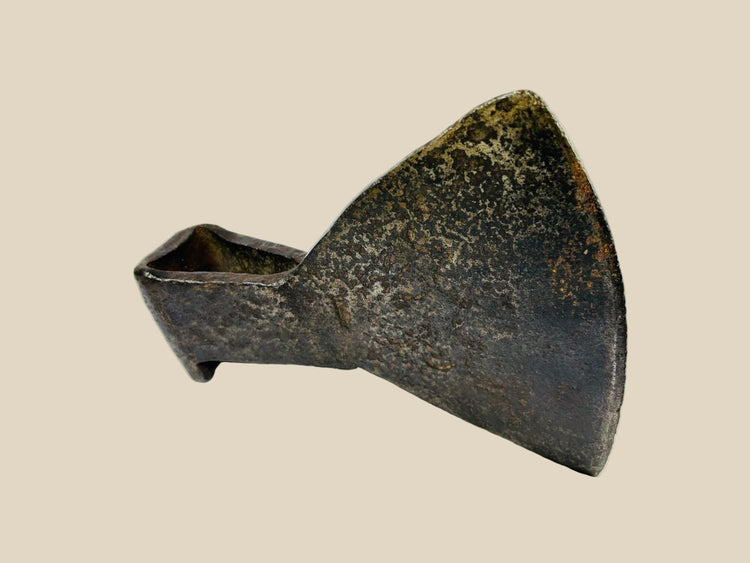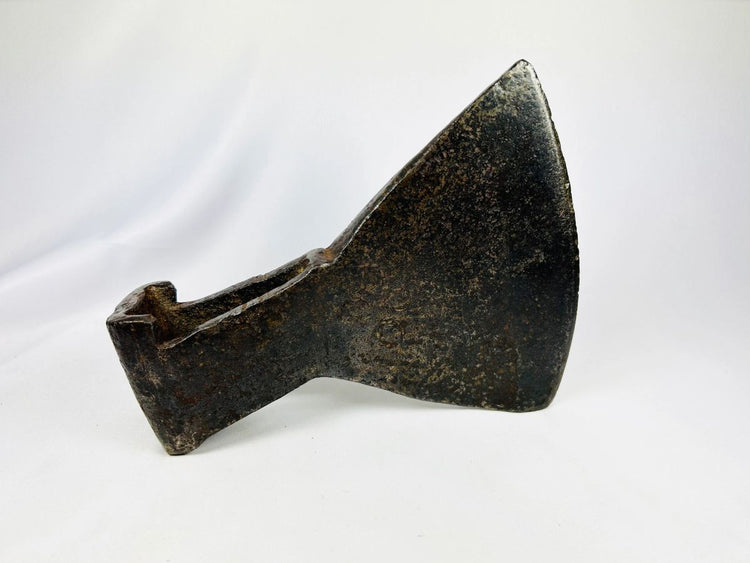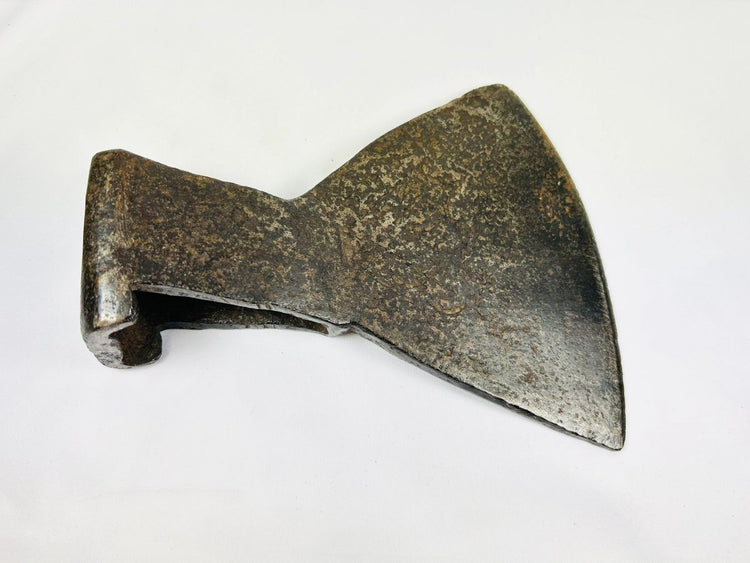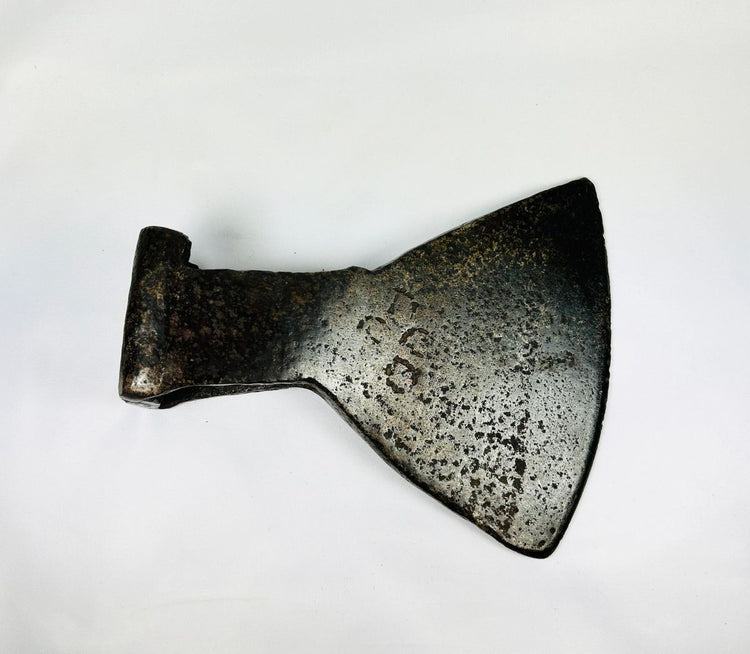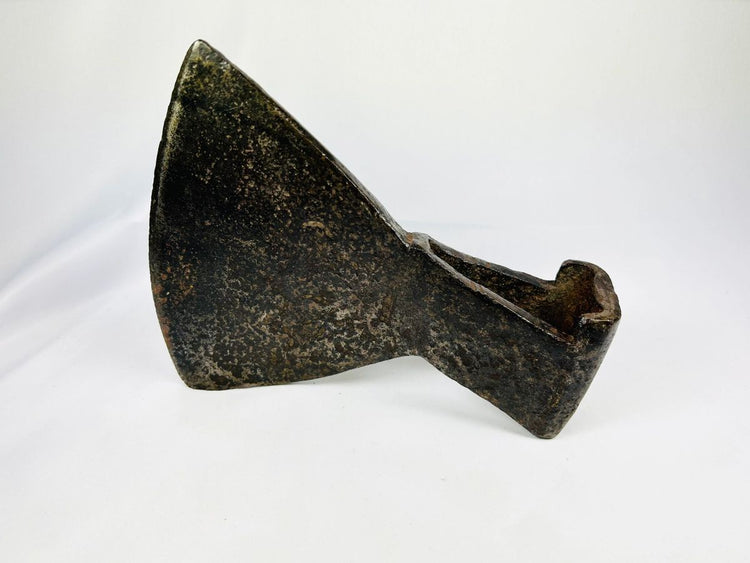Cast Iron Axe Head | European or Colonial American Wedge Form | 18th Century
Description
More
Less
Historical Context & Origin
Region: Europe or Colonial America
Material: Cast iron
Period: 18th Century
Description
A robust relic of early ironworking, this 18th-century cast iron axe head exemplifies the durability and practicality of historical tools and weaponry. Measuring approximately 8.5 inches by 7 inches, the wedge-shaped form reflects a design optimized for powerful splitting and cutting. Its trapezoidal blade and triangular socket ensured strength, stability, and efficiency, while a faint punched motif on one face may indicate a maker’s mark or symbolic insignia. The surface bears a rich patina with natural oxidation, attesting to centuries of age and authenticity.
Features
- Solid cast iron construction for strength and longevity
- Broad trapezoidal blade for efficient cutting and splitting
- Triangular socket for secure hafting onto a wooden handle
- Indistinct punched motif possibly indicating maker’s mark
- Rich aged patina with oxidation, enhancing authenticity
Cultural Significance
In the 18th century, iron axes were indispensable tools across Europe and colonial America. Used in agriculture, logging, homesteading, and settlement building, they also served as versatile weapons and utility tools for soldiers and frontiersmen. This piece illustrates the dual role of ironwork in both civilian and military life, reflecting the practical ingenuity that underpinned expansion, survival, and craftsmanship in the early modern world.
Condition
Well-preserved with stable form, surface wear, and oxidation consistent with age. Patina enhances its historical value and authenticity.
Dimensions (approximate)
Height: 8.5 in
Width: 7 in
Age
18th Century
Learn More
Explore the Untold Story of the Axe Through the Ages
Description
Historical Context & Origin
Region: Europe or Colonial America
Material: Cast iron
Period: 18th Century
Description
A robust relic of early ironworking, this 18th-century cast iron axe head exemplifies the durability and practicality of historical tools and weaponry. Measuring approximately 8.5 inches by 7 inches, the wedge-shaped form reflects a design optimized for powerful splitting and cutting. Its trapezoidal blade and triangular socket ensured strength, stability, and efficiency, while a faint punched motif on one face may indicate a maker’s mark or symbolic insignia. The surface bears a rich patina with natural oxidation, attesting to centuries of age and authenticity.
Features
- Solid cast iron construction for strength and longevity
- Broad trapezoidal blade for efficient cutting and splitting
- Triangular socket for secure hafting onto a wooden handle
- Indistinct punched motif possibly indicating maker’s mark
- Rich aged patina with oxidation, enhancing authenticity
Cultural Significance
In the 18th century, iron axes were indispensable tools across Europe and colonial America. Used in agriculture, logging, homesteading, and settlement building, they also served as versatile weapons and utility tools for soldiers and frontiersmen. This piece illustrates the dual role of ironwork in both civilian and military life, reflecting the practical ingenuity that underpinned expansion, survival, and craftsmanship in the early modern world.
Condition
Well-preserved with stable form, surface wear, and oxidation consistent with age. Patina enhances its historical value and authenticity.
Dimensions (approximate)
Height: 8.5 in
Width: 7 in
Age
18th Century
Learn More
Explore the Untold Story of the Axe Through the Ages
You May Also Like
















